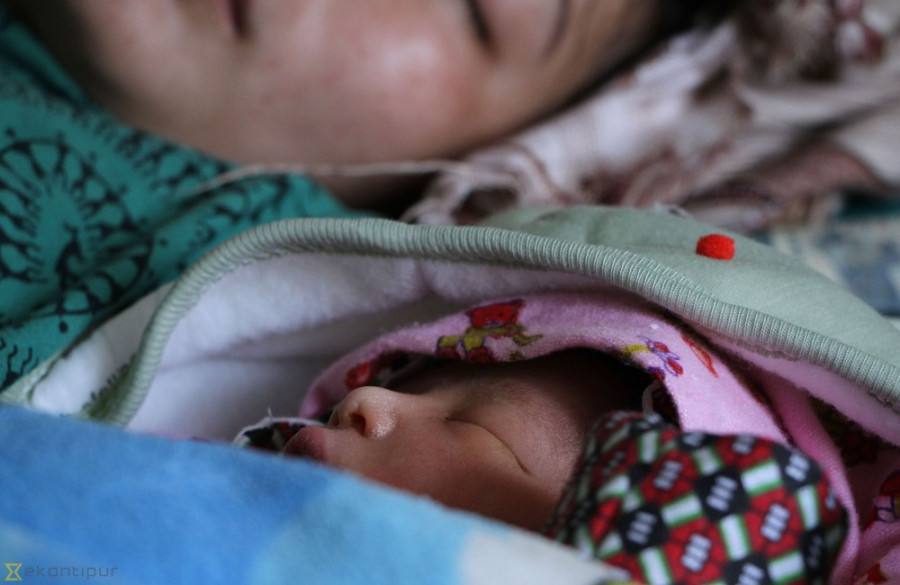Health
Nepal still has a long way to go to lower infant and maternal deaths
According to the Department of Health Services, 2,036 newborn babies and 208 mothers died in the fiscal year 2018-19.
Arjun Poudel
Two thousand and thirty-six newborn babies and 208 new mothers died due to childbirth-related complications in state-run health facilities across the country in the last fiscal year 2018-19.
Although the government has launched several programmes to reduce infant and maternal deaths in the country, newborn babies and mothers continue to die in big numbers.
Dr Jhalak Sharma, chief of the immunisation section of Family Welfare Division at the Department of Health Services, said most cases of child mortality in the country are neonatal deaths.
Hypothermia, infection, low birth weight, premature birth, abnormal birth asphyxia are among the leading causes of neonatal deaths.
The section has been running programmes on newborn care, kangaroo care, exclusive breastfeeding, infection prevention, chlorhexidine for umbilical cord care and free neonatal care, among others, to lower child mortality.
"We have launched several programmes to curb neonatal deaths, but to little effect," Sharma told the Post.
According to the data provided by the Health Management Information System (HMIS) under the Department of Health Services, Province 1 witnessed the highest number of infant deaths in the fiscal year 2018-19. The state-run health facilities in the province recorded 675 newborn deaths, and 301 of them were in Bhojpur district.
Province 5 had the second-highest infant death numbers at 415, followed by Sudurpaschim Province (316), Province 3 (251), Karnali Province (152), Province 2 (117) and Gandaki Province (110).
To bring down the maternal mortality rate, the safe motherhood section of Family Welfare Division at the Department of Health Services has also been running several programmes, including safe delivery services, antenatal care and postnatal care, to curb maternal deaths.
According to the HMIS data, Province 5 witnessed the highest number of maternal deaths at 54. Forty-three new mothers died in various government-run health facilities in Province 3; 42 in Province 1; 29 in Province 2; 17 in Sudurpaschim Province; 13 in Karnali Province; and 10 in Gandaki Province.
What is more alarming is the infant and maternal death numbers could be much higher, as the Health Management Information System has not taken into account the deaths of newborn babies and mothers at homes or outside the health facilities.
"The number of deaths could be much higher because the babies and new mothers who died at their homes are not included in the Health Management Information System," Dr Shyam Raj Upreti, a child health expert, told the Post.
Dr Sharma supports Dr Upreti's suspicion. The data provided by female community health volunteers, who work in the villages, show that the infant and maternal death numbers in the country are much higher than the figures offered by HMIS, Dr Sharma said.
Moreover, health experts say, the HMIS data are not comprehensive because many health facilities in remote areas do not update their data due to the shortage of technical human resources and the lack of internet access.
The National Demographic Health Survey 2016 shows that 21 babies in every 1,000 live birth die within one month.
The survey also shows for every 100,000 births, 229 women die during or after childbirth. Nepal had previously reduced the maternal mortality rate from 539 in 1996 to 239 in 2016—for which the country received the Millennium Development Goal award.




 5.39°C Kathmandu
5.39°C Kathmandu













%20(1).jpg&w=300&height=200)
